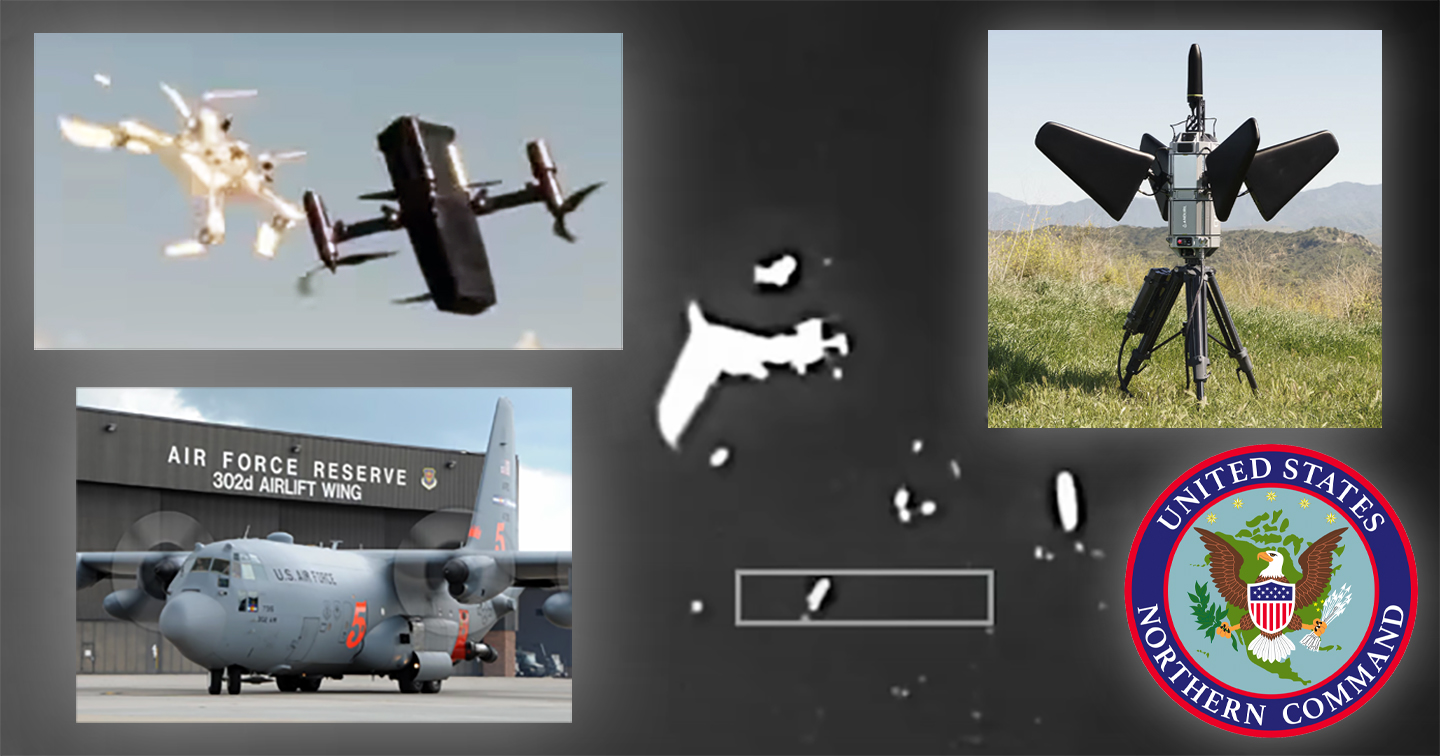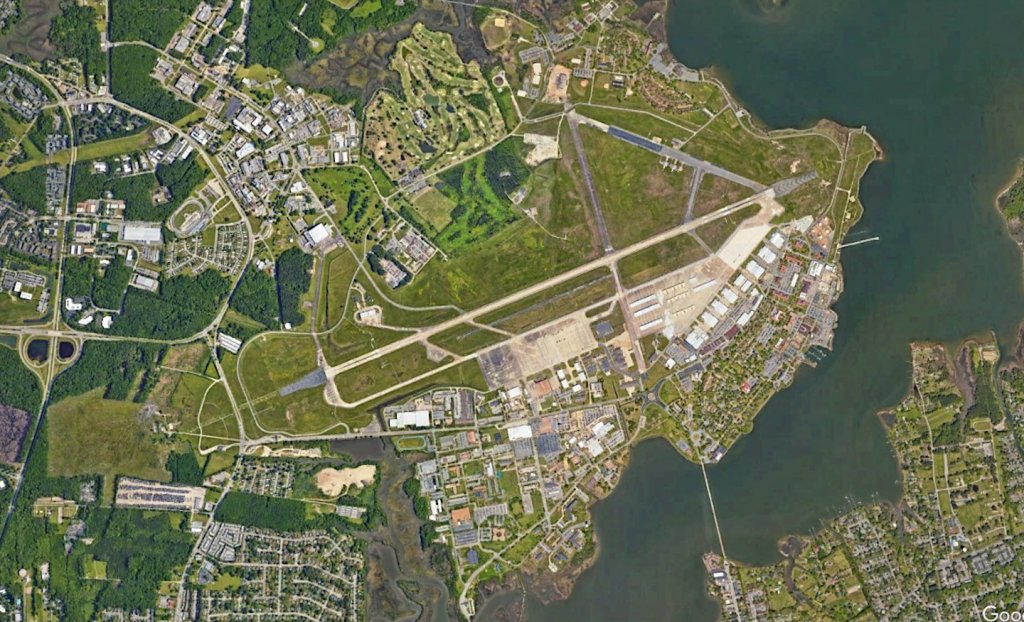New Quick Reaction Force Will Counter Military Base Drone Incursions

The U.S. military will soon have teams that can respond within 24 hours to drone incursions at homeland installations. The head of U.S. Northern Command (NORTHCOM), Gen. Gregory Guillot, announced the new effort Thursday during the Falcon Peak 25.2 counter-drone evaluation taking place at Eglin Air Force Base in Florida. That’s where the equipment, called a “fly-away kit,” was demonstrated. You can read more about what’s in these kits later in our story.
The introduction of these teams comes as U.S. military installations have seen a significant increase in reported drone sightings over bases in the past year, a NORTHCOM spokesperson told The War Zone. From September 2023 to September 2024, there were about 230 reported drone incursions, the spokesperson said. From September 2024 to this month, there were about 420. Whether that represents an actual jump in drone overflights or better sensing that detected them remains unclear.
This new response system is designed to deliver counter-drone equipment and experts who can use it to assist installation commanders with incursions they can’t handle on their own.
“This is the first quick reaction force for drone response that we’ve had in the homeland,” NORTHCOM Deputy Test Director Jason Mayes pointed out.

It will be several months before these teams are ready to roll out as the process is validated and the personnel is trained, the NORTHCOM spokesman told us.
This new counter-drone effort was created by NORTHCOM in the wake of drone incursions like those over Langley Air Force Base in 2023, as well as Wright-Patterson Air Force Base, Picatinny Arsenal, and others late last year. They were developed with lessons learned from those events. A key change is that these teams can use low-collateral kinetic methods of intercepting offending drones that can physically take them down while causing minimal damage. Previously, the military relied mainly on non-kinetic methods like jamming. You can read more about the challenges of defending against drones in the homeland in our deep dive on the subject here.

Previously, NORTHCOM, tasked with synchronizing homeland drone defenses, could only advise installation commanders about how to defeat drone incursions and “try to help facilitate borrowing equipment,” Guillot told a small group of reporters, including from The War Zone. “Now we’ll have equipment that we can respond to [incursions].”
These teams will work directly for installation commanders, Guillot explained, and will be delivered as the last part of a layered defense approach that begins with efforts at the local level.
“We just provide the capability because all the authorities are through the installation commander, but that would bring both active and passive detection capability and non-kinetic and low collateral kinetic defeat capability, all in one package that could very quickly set up and operate and defeat the incursions,” he explained. “And then once done, we pack up and come back here and reset for the next one.”
Initially, there will be one response team, based at Peterson Space Force Base in Colorado, Guillot noted. That base was chosen in large measure because the 302nd Airlift Wing, co-located there, has C-130 Hercules transport planes that can deliver the kits to where they are needed. The current plan, the general added, is to ultimately have three teams, one on the East Coast, one on the West Coast and one in Alaska.

The first fly-away kit these teams will use was produced by Anduril. The company describes it as a “rapidly deployable, modular, and battle-tested counter-UAS system designed to detect, track, identify, and defeat Group 1-3 drones.”
The kit “includes a suite of sensors, effectors, and software optimized for expeditionary employment and the homeland defense mission. Key products in the kit include the Mobile Sentry for autonomous threat detection, tracking, and identification, Wisp SkyFence for wide-area IR passive detection and tracking, Pulsar for radio-frequency detection and electromagnetic effects, and Anvil for kinetic defeat. The kit also includes integrated power, networking, and edge compute. Designed for ease of deployment and operation by soldiers and airmen, the Fly-Away Kit delivers end-to-end kill-chain capability backed by the Lattice operating system.”

Anduril’s kit was demonstrated about an hour before Guillot spoke with reporters. It is a hit-to-kill system that locks onto a target drone, then sends an Anvil drone to smash into it to bring it down.
The demonstration started with an aggressor drone hovering in the air. Moments later, it was hit by the Anvil drone.
Mayes, the NORTHCOM deputy test director, provided some insights into the system as the demonstration was taking place.
The Anvil drone was launched and then climbed to a point where it could loiter, awaiting inputs from the sensors to follow the aggressor, then attack it.
“That’s when it begins its sensing protocols to go and actually identify where that target drone is at,” Mayes explained. “And then it will fly to start pursuit of that drone. And once it is within the proper proximity, it will relay back to the operators a series of commands that it is able to execute at that time, and then the operator will decide what they want to be able to do at that point. So we still have a human on the loop, but they’re not physically on the stick, flying the drone, so it’s doing that part on its own.”

Guillot said that eventually, other systems will be considered for fly-away kits.
“I think we’re looking at everything,” he told The War Zone. “Then we’ll make our decisions based on a number of things to include commonality. That helps us with training and fielding. But again, we’re open.”
The NORTHCOM commander added that he is “more worried about having the plug-and-play capability…I certainly don’t want to be aligned to any one vendor. I think this is a rapidly growing community.”
He noted that several defense contractors were at Eglin for Falcon Peak with a variety of systems.
“In our demonstration and vendor areas, you see a lot of cooperation and people willing to share capabilities,” Guillot posited. “So I think that’s the way to go, as opposed to staying with one vendor.”
While being able to deliver these systems within 24 hours is “fast,” Guillot noted that “obviously, we would like to be faster.” He pointed out that part of the process involves getting authority from the FAA to operate these systems once the fly-away kits land and are set up.
Guillot acknowledged that this effort would not be effective against a surprise attack like Ukraine’s Spider Web operation earlier this year. The audacious attack used drones launched from trucks parked at multiple locations inside Russia to strike nearby bombers, destroying and damaging several. You can see video of part of that below.
In a surprise attack, installations have to rely on their own resources, which are in the process of being bolstered by the respective military services, Guillot stated. However, “if for some reason it’s a surprise attack that’s followed with a sustained follow-on incursion, that’s where the fly-away kits would be useful.”
Despite this increased effort to handle incursions, Guillot acknowledged that the problem of these incidents is only going to get worse.
“We’re at a million [drones flying in the U.S. annually] now. I think we’re going to go over 2 million very, very quickly. I’d expect to see more and more of these engagements.”
0